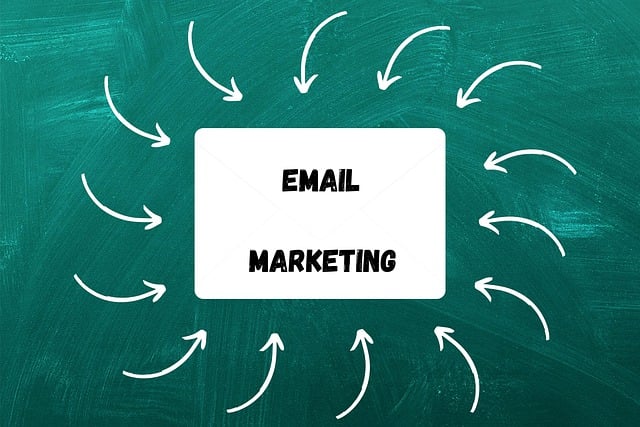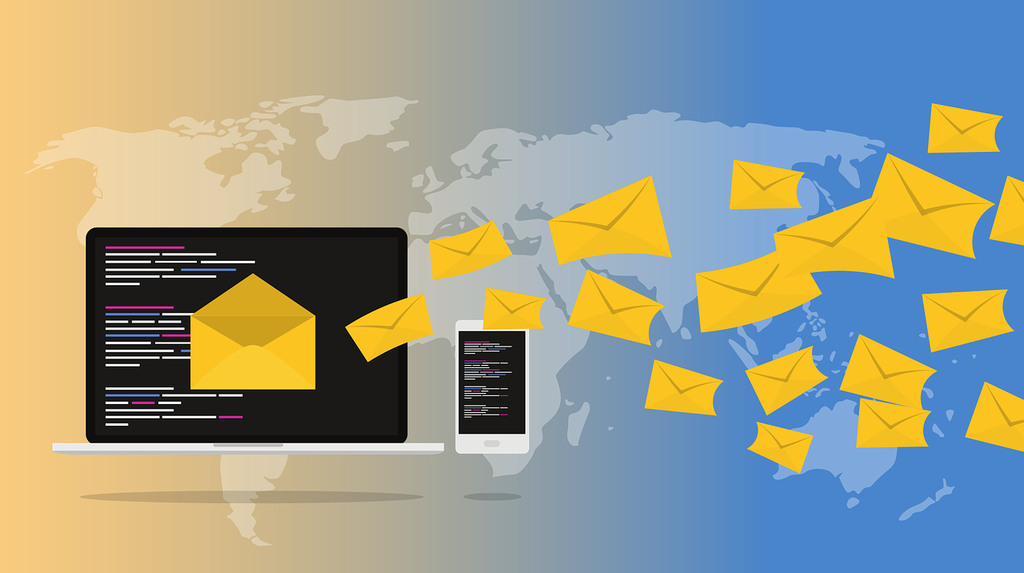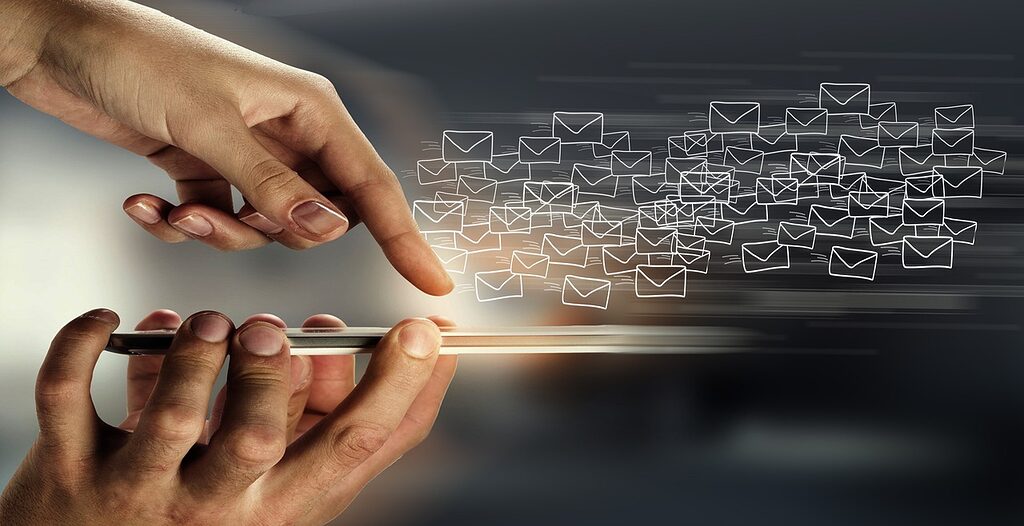One of the best ways to increase conversions and establish enduring connections with your audience is still through email marketing. But with so many emails landing in the typical inbox, it’s important to make an impression and effectively engage your recipients. This in-depth manual will go over tactics, recommendations, and resources to help you boost email marketing efforts and improve conversion rates.

1. Understanding Email Marketing
2. Building a High-Quality Email List
3. Crafting Compelling Subject Lines
4. Creating Engaging Email Content
5. Personalization and Segmentation
6. Optimizing for Mobile Devices
7. Implementing A/B Testing
8. Utilizing Automation
9. Analyzing and Improving Performance
10. Ensuring Deliverability and Avoiding Spam Filters
11. Integrating Social Media
12. Leveraging User-Generated Content
13. Utilizing Behavioral Triggers
14. Maintaining Compliance with Regulations
15. Future Trends in Email Marketing
1. Understanding Email Marketing
Email marketing is the practice of sending promotional emails to a list of subscribers. These messages could be promotional, educational, or commercial. Developing a relationship with the audience and persuading them to do a certain action, such as making a purchase, joining a webinar, or downloading a resource, is the primary goal.
What makes email marketing so effective is the direct communication it provides with its audience. By interacting directly and personally with customers, it enables businesses to establish a connection and foster a sense of loyalty.
Creating an Excellent Email List
A strong email list is the foundation of any email marketing campaign that is successful. The following techniques can help you create and manage a successful email list:
- 1. Provide Useful Content
Offer exclusive articles, whitepapers, or eBooks as useful content in return for email sign-ups. Ensure that the content is relevant to the requirements and interests of your audience.
- 2. Carefully Utilize Sign-Up Forms
On your website, place sign-up forms in prominent places like the homepage, blog articles, and landing pages. Make sure it’s simple to locate and complete the forms.
- 3. Make Use of Social Media
To reach more people, advertise your email newsletter on social media sites. Advertise on social media to attract new members.
- 4. Conduct Events and Webinars
Organize online events or webinars and demand email address registration. By doing this, you will increase the size of your list and obtain highly qualified leads.
- 5. Put Exit-Intent Popups in Place
To capture users who are about to leave your website, use exit-intent popups. Give them a strong incentive to subscribe, like a deal or access to special material.
2. Building a High-Quality Email List
The subject line greatly influences whether or not your receivers open your email because it is the first thing they see. Here are a few pointers for creating attention-grabbing topic lines:
- 1. Make It Brief and Sweet
Try to keep your subject lines brief and direct. It should have no more than 50 characters to ensure that it fills the screen on most devices.
- 2. Establish a Feeling of Immediacy
Add phrases that convey a sense of urgency or scarcity, like “limited time,” “exclusive offer,” or “ending soon.”
- 3. Customize Whenever Practicable
To make the email feel more relevant and customized, include the recipient’s name or other personal information in the subject line.
- 4. Employ Language That Is Action-Oriented
To stimulate movement, using forceful verbs and obvious calls to action, such as “Join now,” “Discover,” or “Download.”
- 5. A/B Check Your Subject Lines
Try out several subject line alterations to determine which ones your audience responds to the best. Utilize the data to improve your strategy.
3. Crafting Compelling Subject Lines
The substance of your email must hold the recipient’s attention and motivate them to take action once the subject line has drawn them in. Here’s how to write compelling email copy:
- 1. Make a powerful opening
A captivating starting phrase will draw the reader in. This might be a direct question, a strong declaration, or a warm greeting.
- 2. Concentrate on Just One Goal
Whether it’s sharing a piece of content, advertising a product, or encouraging event registration, every email should have a single, distinct goal. Refrain from sending too many messages in one email.
- 3. Make Good Use of Visuals
To add visual appeal and break up content in your emails, use GIFs, movies, or high-quality photographs. Make sure the images complement the text and are pertinent.
- Compose Brief and Clearly
Make sure your writing is clear and succinct. To make your writing more readable, use subheadings, bullet points, and brief paragraphs.
- 5. Make a Voluminous Appeal for Action
There should be an attention-grabbing call to action (CTA) in every email. Make the CTA visually noticeable and use wording that calls for action.
- 6. Humanize It
Adapt the email’s content to the recipient’s interests, history, or demographics. As a result, the email is more interesting and relevant.
4. Creating Engaging Email Content
Delivering pertinent material that appeals to your audience requires personalization and segmentation. Here’s how to segment and tailor your email marketing successfully:
- 1. Gather Useful Information
Get information about the preferences, actions, and demographics of your subscribers. Customize the content of your emails with this info.
- 2. Divide Up Your Viewers
Based on factors like location, interests, engagement level, and past purchases, divide your email list into smaller categories. More pertinent and targeted communications is now possible as a result.
- 3. Personalize Beyond the Name:
Don’t limit yourself to just using the recipient’s name. Provide recommendations for things that are comparable to what they have previously purchased in your emails, depending on their past contacts with your company.
- 4. Make Use of Dynamic Content
Use chunks of dynamic content that alter according to the recipient’s information. This can contain location-specific information, customized offers, or recommendations for products based on individual needs.

5. Personalization and Segmentation
Personalization and segmentation are essential for delivering relevant content that engages your audience. Here’s how to effectively segment and customize your email marketing:
- Compile relevant data
Find out what your subscribers’ likes, dislikes, and demographics are. Use this information to personalize the email content you send. - Distribute Your Audience
Sort your email list into more manageable categories based on variables like location, interests, engagement level, and previous transactions. This means that messaging can now be more relevant and focused. - Add More Than Just a Name: Don’t limit yourself to using the recipient’s name alone. Provide them with individualized emails that include product recommendations or pairing ideas based on their previous interactions with your brand.
- 4. Employ Content That Is Dynamic
Make sure your emails are mobile-friendly because a big percentage of emails are seen on mobile devices. To make your emails mobile-friendly, follow these suggestions:

6. Mobile Device Optimization
Make sure your emails are mobile-friendly because a big percentage of emails are seen on mobile devices. The following advice can help you make your emails mobile-friendly:
- 1. Employ a Responsive design First
Make use of flexible email templates that change to fit different screen widths. Your emails will appear fantastic on all devices thanks to this.
- 2. Maintain a Basic Layout
A single-column style is best; stay away from intricate patterns. This facilitates reading and interacting with your content for mobile consumers.
- 3. Image Optimization
Make sure your images are suited for mobile devices’ quick loading times. In the event that a picture does not load properly, use alt text.
- 4. Make it Simple to Tap CTAs
Make sure your call-to-action buttons on touchscreens are large enough to tap with ease. Put them in the email’s main body.
- 5. Employ Authentic Fonts
Select typefaces that are readable on compact screens. Make sure there is enough contrast between the text and the background and stay away from using small font sizes.
7. Implementing A/B Testing
Split testing, also known as A/B testing, is a potent technique for email marketing optimization. You may find out which email versions are most effective with your audience by testing various iterations. Here’s how to successfully use A/B testing:
- 1. Establish a Goal
Determine the goals you have for your A/B test. Increasing open rates, click-through rates, or conversions could be one way to do this.
- 2. Conduct a Single Variable Test
Concentrate on testing one element at a time, such as email copy, CTAs, photos, and subject lines. This aids in identifying the precise factors that specifically affects performance.
- 3. Evenly Divide Your Audience
For the test, split your email list into two equal groups. For accurate results, make sure the groups are randomly assigned.
- 4. Examine the Findings
Examine each variation’s performance after the test. Apply the insights to your email strategy and future campaigns to incorporate the elements that worked well.
8. Utilizing Automation
With email automation, you may automatically send your subscribers timely and relevant messages without requiring human participation. This has the potential to greatly increase efficacy and efficiency. Here are a few applications for email automation:
- 1. Greetings Series
Create an automated welcome series to welcome brand-new members. A thank-you email, a brand introduction, and a special offer are a few examples of this.
- 2. Emails relating to cart abandonment
Send automated emails to customers who have forgotten items in their cart to remind them. Give them a compelling reason to return and complete the transaction.
- 3. After-purchase Follow-Ups
After a customer makes a purchase, follow up with them using automated emails. Order confirmations, delivery updates, and requests for reviews or feedback might all fall under this category.
- 4. Reengagement Campaigns
Use automation to re-engage inactive subscribers. Send them a series of emails featuring special offers or thought-provoking articles to elicit a response.
- 5. Drips from Campaigns
Set up drip campaigns that will automatically nurture leads over time. Provide enlightening content and gradually encourage people to convert.
9. Analyzing and Improving Performance
Regular performance analysis of your email marketing is necessary for continuous improvement. Here’s how you assess and improve your email marketing’s efficacy:
- 1. Keep an eye on critical data
Pay close attention to crucial email marketing metrics such as open, conversion, bounce, and unsubscribe rates.
- 2. Utilize Resources for Analytics
Utilize email marketing analytics solutions to gain deeper insights into your campaigns. Most email marketing solutions have analytics tools built right in.
- 3. Carry Out Continual Audits
To find opportunities for improvement, do routine audits of your email campaigns. Examine your data for patterns and trends.
- 4. Get Input from Subscribers
Get subscriber comments to learn about their preferences and problems. To get insights, use polls, surveys, or direct responses.
- 5. Make Decisions Based on Data
Make well-informed decisions regarding your email strategy by utilizing the data and feedback. Always test and maximize the performance of your campaigns.
10. Ensuring Deliverability and Avoiding Spam Filters
For your email marketing initiatives to be successful, it is imperative that your emails arrive in the inbox. Here’s how to get around spam filters and increase deliverability:
- 1. Keep Your Email List Clear
Make sure to regularly purge your email list of invalid or inactive email addresses. This lowers bounce rates and enhances delivery.
- 2. Make Use of a Trusted Email Service Supplier
Select an email service company that has a solid deliverability record. This can have a big effect on how well you can get emails.
- 3. Check the Veracity of Your Emails
Use email authentication technologies like DKIM, DMARC, and SPF to validate your correspondence and lessen the possibility that it will be regarded as spam.
- 4. Steer clear of spam triggers
Steer clear of email spam trigger words and phrases. These could be phrases like “free,” “urgent,” or “act immediately.
- 5. Promote Involvement
Urge recipients to reply, click on links, and move your emails to their main inbox in order to interact with your communications. Email providers can tell that your emails are useful if you have high engagement.
11. Integrating Social Media
You may increase your reach and engagement by integrating social media with your email marketing. The following techniques will help you successfully use social media in your email campaigns
- 1. Encourage social media users to sign up for email newsletters
Encourage fans to subscribe to your email newsletter by promoting it on social media. Highlight the advantages of becoming a subscriber.
- 2. Add Buttons for Sharing on Social Media
Provide links to social media platforms in your emails so that recipients may share your content with their networks with ease.
- 3. Make Use of Social Proof
Include social evidence in your messaging, such as user-generated content from social networking sites, reviews, or endorsements from pleased clients.
- 4. Carry Out Conversations
Send each other emails and post about each other’s goods and services on social media. For example, utilize social media to promote an exclusive email offer or include a mention of a popular social media post in your newsletter.
12. Leveraging User-Generated Content
Using user-generated content (UGC) in your email marketing can help them become more real and credible. Here are some tips for maximizing UGC:
- 1. Encourage Customer Testimonials and Reviews
Emphasize the client endorsements and recommendations in your correspondence. This contributes social proof, which raises trust.
- 2. Tell Customer Tales Media
Provide case studies or anecdotes about how your clients are utilizing your goods or services. Emphasize their accomplishments and past experiences.
- 3. Highlight Posts on Social Media
Incorporate client social media posts into your email correspondence. These could be pictures, movies, or sayings that show off your goods in actual use.
- 4. Implement UGC Promotions
Organize efforts that inspire consumers to produce and distribute brand-related content. Provide rewards or recognition to encourage involvement.
13. Utilizing Behavioral Triggers
Using behavioral triggers, you may send emails to subscribers at the appropriate times and based on their behaviors. Here’s how to make good use of behavioral triggers:
- 1. Greetings to New Members
Soon after someone joins your list, send them a welcome email. Express gratitude for their participation and give a succinct overview of your company.
- 2. Give Loyal Clients Rewards
Configure recurring emails to honor devoted clients according to their past purchases or level of brand interaction. Give special discounts or first access to upcoming items.
- 3. Re-Engage Inactive Subscribers
Identify subscribers who haven’t engaged with your emails for a while and send a re-engagement email with a special offer or valuable content.
- 4. Follow Up on Abandoned Carts
Send automated follow-up emails to customers who have abandoned their carts. Include a reminder and an incentive to complete their purchase.
- 5. Acknowledge Milestones
Celebrate milestones such as birthdays, anniversaries, or customer anniversaries with special emails. Offer a personalized message and a special offer.
14. Maintaining Compliance with Regulations
Adherence to email marketing regulations is crucial in order to evade penalties and preserve a favorable reputation. Here’s how to guarantee adherence:
- 1. Comply with the CAN-SPAM Act Regulations
Adhere to the CAN-SPAM Act in the United States by providing a legitimate physical address, an unambiguous and noticeable unsubscribe link, and precise subject lines.
- 2. Comply with GDPR Regulations
Observe the General Data Protection Regulation if you have subscribers in the European Union (GDPR). Acquire express consent, give unambiguous privacy disclosures, and let users access and remove their data.
- Quickly comply with requests to unsubscribe
Make sure that requests to unsubscribe are handled quickly and easily. Delete unsubscribed contacts right away from your list.
- 4. Make Opt-In and Opt-Out Clear Choices Available
On your sign-up forms, make sure to include clear instructions on the advantages of subscribing as well as convenient opt-in and opt-out choices.
15. Future Trends in Email Marketing
Maintaining a competitive advantage in email marketing can be achieved by staying ahead of trends. Observe the following developing trends:
- 1. AI and Machine Learning
Applying AI and Machine Learning allows for the achievement of data analysis, content tailoring, and transmit time optimization. With these tools, your email marketing can be more effective.
- 2. Interactive Online Correspondence
Interactive emails, such as surveys, quizzes, and polls, are getting more and more popular. They enthrall the crowd and provide perceptive analysis.
- 3. Exceptional Personalization
Beyond basic personalization, hyper-customization leverages data to create highly tailored content for each recipient. Two instances of this are personalized product suggestions and dynamic content.
- 4. Data security and privacy
Email marketers need to give data security and transparency a priority because privacy concerns are growing. Make sure all requirements are followed, and make sure your data practices are understood.
- 5. Convergence with Additional Channels
A unified and smooth consumer experience is produced by integrating email marketing with other platforms including social media, SMS, and chatbots.
CONCLUSION
One of the best strategies to increase conversions and establish enduring connections with your audience is still email marketing. Through adherence to the tactics and recommendations provided in this guide, you will be able to optimize your email marketing campaigns and achieve superior outcomes. Prioritize building a loyal email list, producing interesting content, segmenting and personalizing your emails, making mobile optimizations, and making use of automation and analytics.
To stay ahead of the competition, make sure you adhere to legal requirements, incorporate additional media into your email advertising, and keep up with changing trends. You’ll be well on your way to becoming an email marketing guru and improving conversions for your company by putting these strategies into practice.

Pingback: Boost Your Business's Growth with Effective Digital Marketing for Startups - truleeinnovate.com